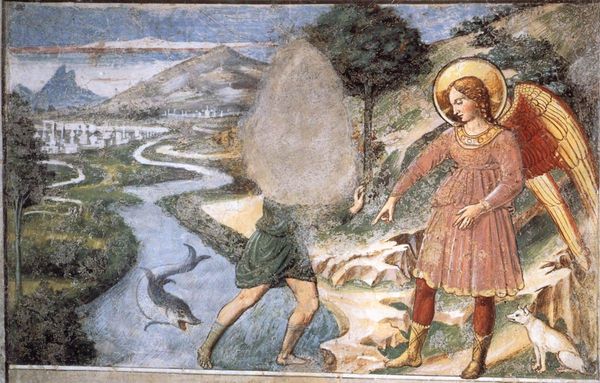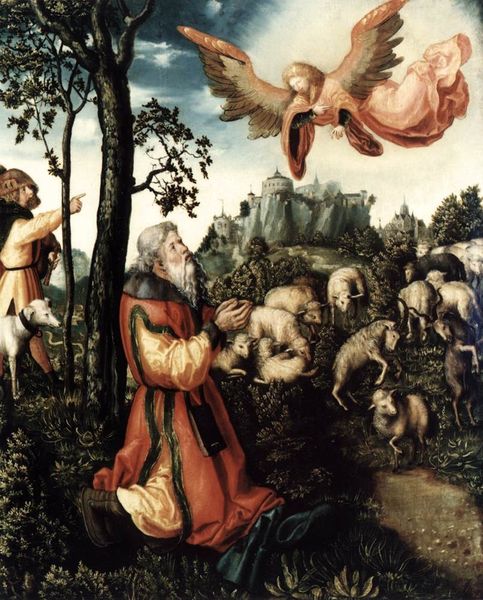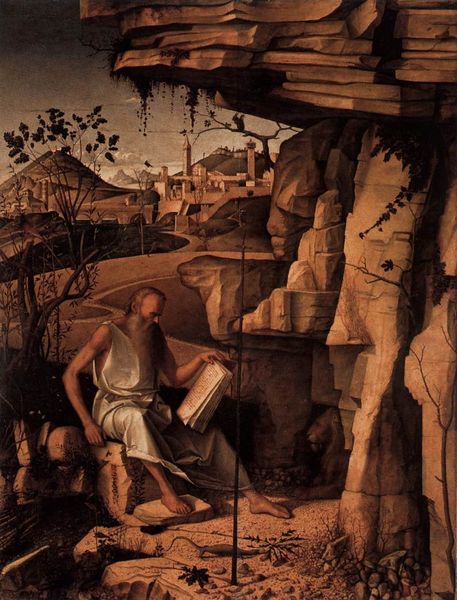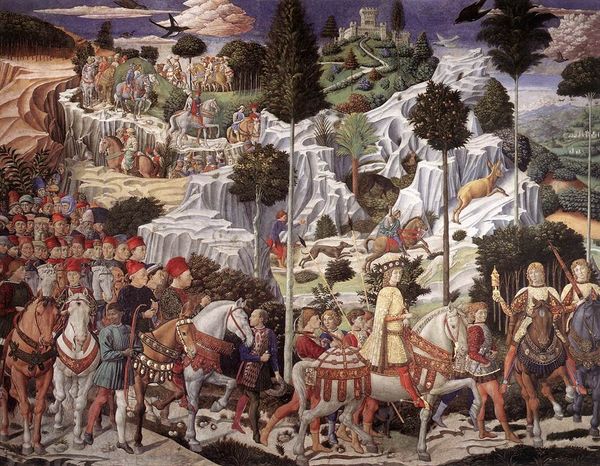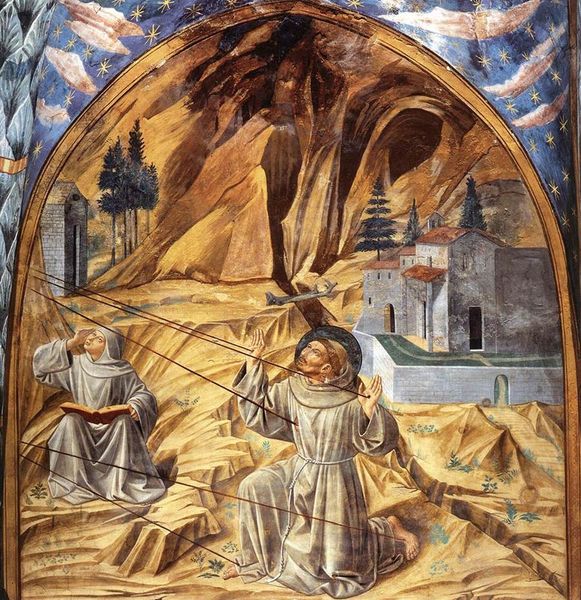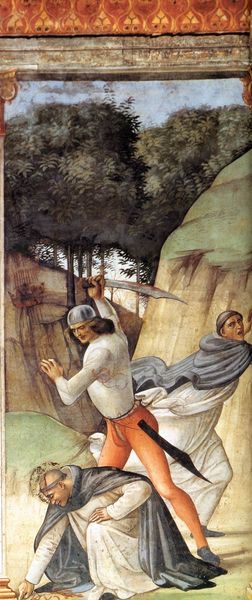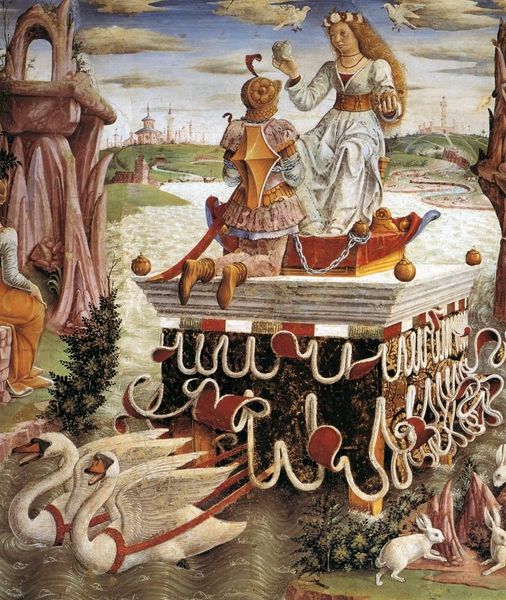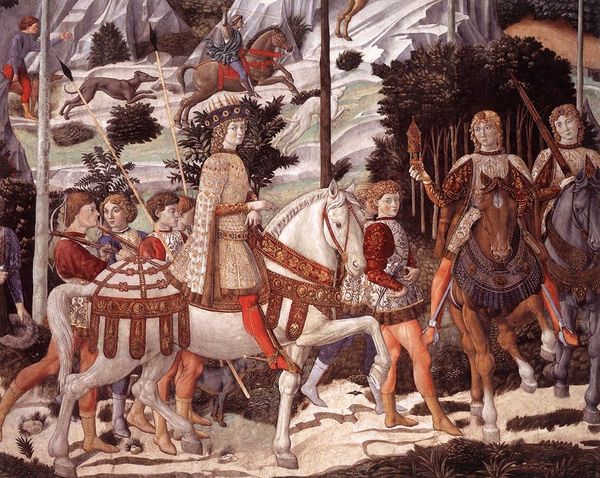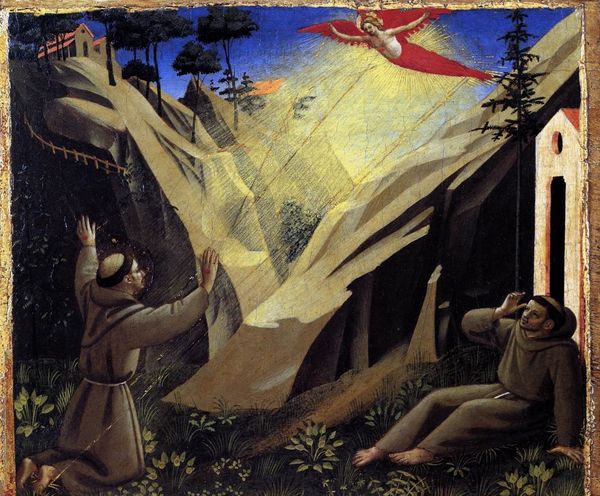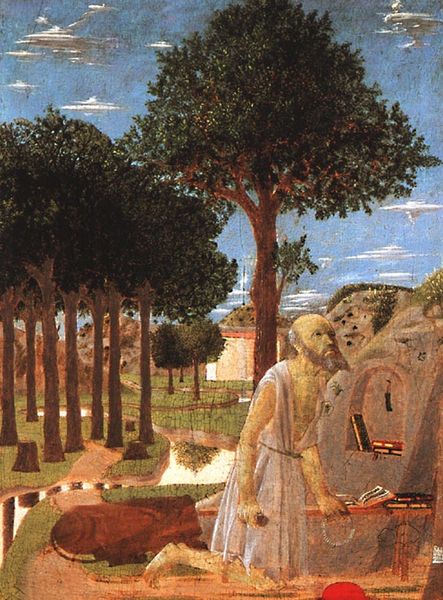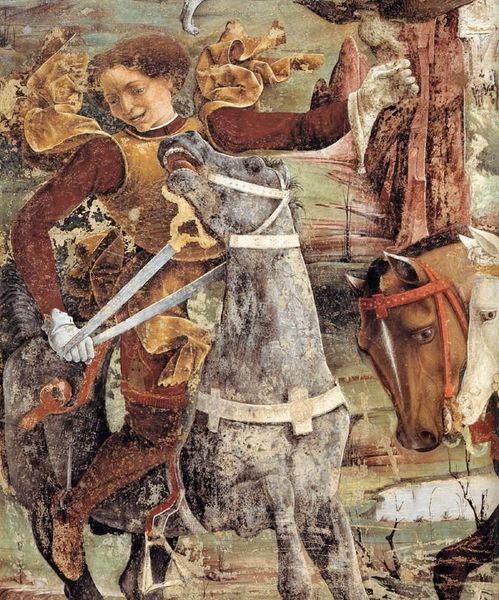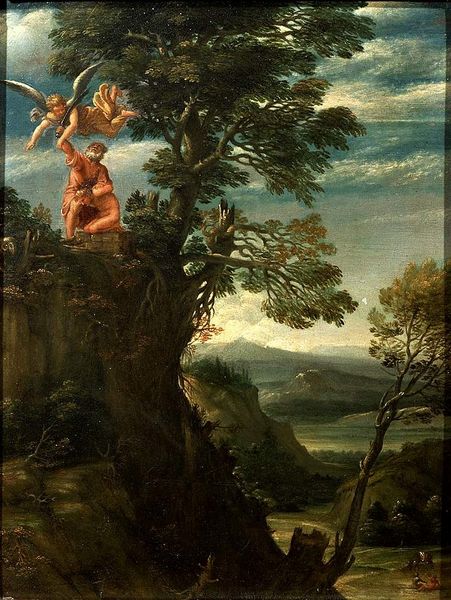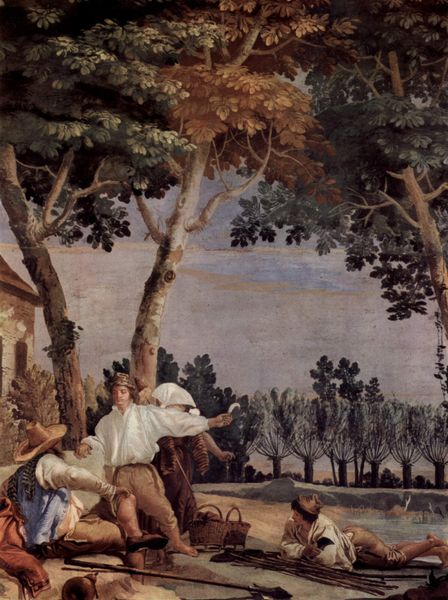
painting, fresco
#
portrait
#
narrative-art
#
painting
#
landscape
#
painted
#
figuration
#
fresco
#
oil painting
#
history-painting
#
academic-art
#
italian-renaissance
#
early-renaissance
Copyright: Public domain
Editor: Here we have a detail from Benozzo Gozzoli's fresco, "Procession of the Magus Balthazar," created in 1461. I’m struck by how vibrant the colors remain, and the figures almost seem to float across the landscape. How would you interpret the social significance of such a work at the time it was made? Curator: This fresco is a fascinating window into the complexities of Renaissance Florence. The opulent detail isn’t just about aesthetic beauty; it's a deliberate display of power and wealth by the Medici family. Gozzoli was essentially creating a visual narrative that legitimizes their rule, framing it within a context of religious and historical importance. Editor: So, the procession isn't just a religious scene, but a form of political theater? Curator: Exactly! Consider the clothing, the horses, even the landscape itself – everything is meticulously crafted to project an image of sophistication and authority. But it also reinforces a hierarchical structure. Who is included in the procession, and who is relegated to the margins? This kind of art reinforces social positions, even when ostensibly depicting a religious journey. Think about it in relation to contemporary conversations about representation and visibility – who gets to tell the story, and whose stories are erased? Editor: That makes me think about how the artist chose to represent the magi themselves. What can we say about this depiction of Balthazar? Curator: Balthazar's representation invites an intersectional analysis. It prompts questions about how artists in Renaissance Europe perceived and portrayed different cultures and ethnicities. Early Renaissance paintings often participated in constructing images of otherness and reinforcing cultural biases that justify hierarchies of power. Editor: So, looking closely at what's depicted—and, perhaps more importantly, what isn’t—can reveal a lot about the power structures at play during the Renaissance. Curator: Precisely. This detail is more than just a pretty picture. It is evidence and an entry point into critical dialogues. It demands that we confront uncomfortable questions about power, representation, and the enduring legacy of art's role in shaping our understanding of the past and present.
Comments
No comments
Be the first to comment and join the conversation on the ultimate creative platform.
